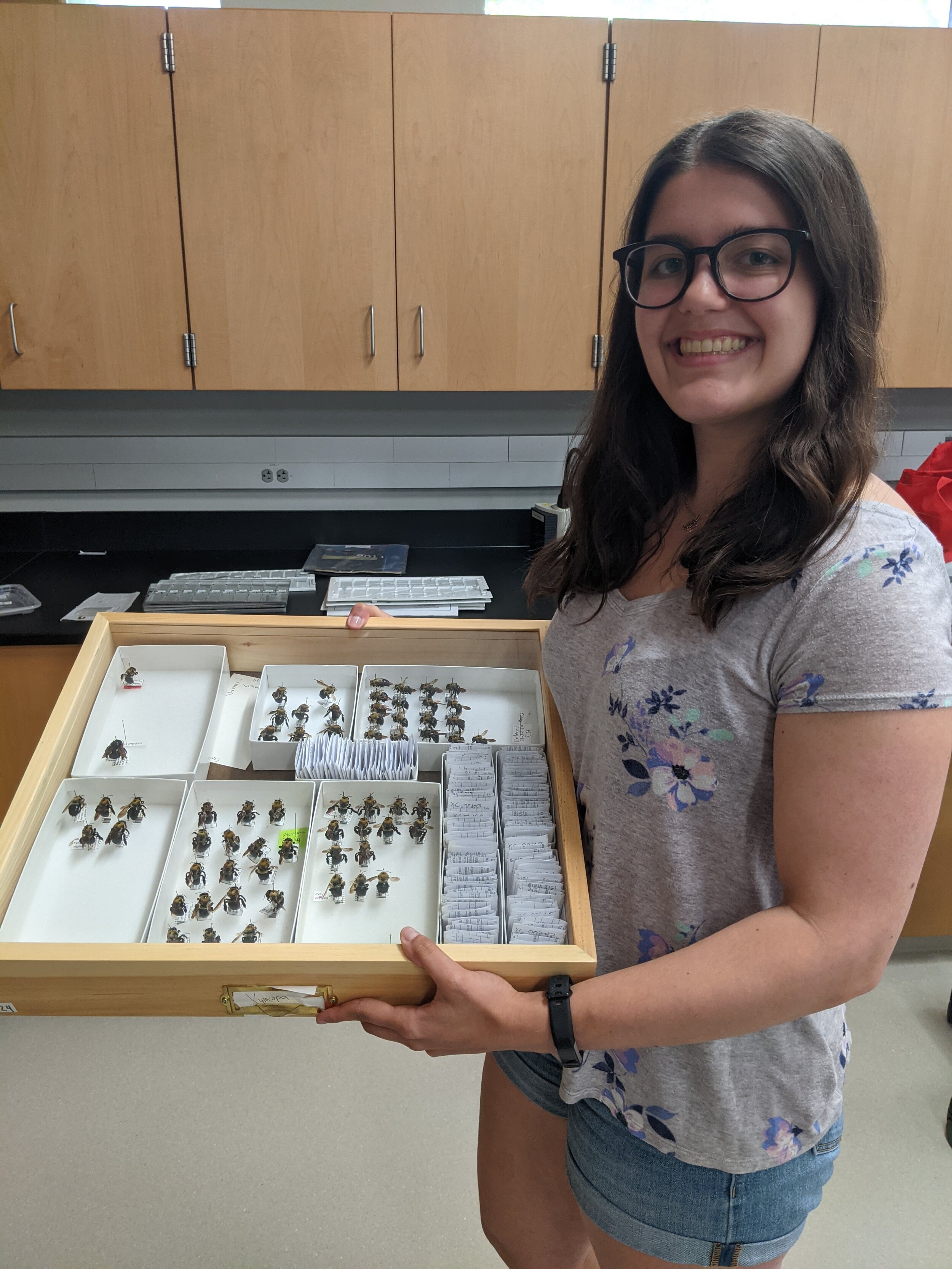Farewell and Congratulations to Madeleine on her Xylocopa virginica wing morph research
Congratulations to Madeleine on her award winning undergraduate research!
As we say goodbye to Madeleine, we want to recognize her research and the SLU awards she’s received so far: Elizabeth J. Keath Research Award, first place in the Biology department undergraduate research symposium, Knoedler Student Research Fund, SLU Presidential Research Fund, and chosen to present at Senior Legacy Symposium! She will be pursuing a dual Master’s degree in Environmental Science and Public Affairs at Indiana University in the fall. Thanks for your contributions to the lab and good luck in your future program!
About the project:
Eastern carpenter bees (Xylocopa virginica) are experiencing wing discoloration—and St. Louis, Mo is a hotspot
As urbanization continues to expand across the globe, wildlife are facing novel environments that provide new challenges to both plants and animals. Temperature is one major factor influenced by urbanization, with urban areas often experiencing warmer temperatures than rural counterparts, a phenomenon known as urban heat island effect. How organisms respond to these changes is a newer avenue of research in ecology and evolution. Certain species have been found to adapt and even thrive in response to urbanization. The eastern carpenter bee, Xylocopa virginica, seems to be one of those species. As the largest and one of the most common bees in eastern North America, X. virginica thrive in cities due to the abundant sources of accessible wood which they use for nesting. However, there might be another factor at play.
A little over 10% of X. virginica in St. Louis, MO exhibit a unique wing phenotype where portions of the wing are translucent. Upon searching different specimen collections and asking other researchers if they observed similar cases, many dismissed the phenomenon. They believed the morph was not real, as it had never been observed before and little to no specimens were collected elsewhere. With sparse information, we began looking into obtaining fundamental information on the morph. Our objective for the study was to quantitatively describe the manifestation of the discoloration and correlate it to factors across the distribution within the city of St. Louis. Additionally, we investigated the prevalence of the morph in the species’ geographical range in the United States and Canada. To describe the phenotype, scope images of the right forewing of 88 lab specimens with the morph were taken and assessed using the R package ‘patternize.’ Regarding the presence of the morph within its range, a comprehensive search of over 25,000 X. virginica records on the public citizen survey platform iNaturalist was done to see if any observations captured individuals with the morph. Using the occurrence data from iNaturalist and the Lab’s collection of morph specimens, we then generated a map of each individual’s location over a map of urban areas in the US and Canada.
Color analysis results from ‘patternize’ show that the morph’s presence is not an all-or-none phenomenon, but follows a generalized gradient. When the morph is present, pigment loss is most commonly found at the distal and posterior region of the forewing, with the direction of loss moving both anteriorly and proximally towards the vascularized area of the wing. Very few wings had lost pigment beyond wing veins. Occurrence results from the iNaturalist data show that the morph is concentrated around urban centers in at least 28 states and 1 Canadian province within the species range. However, St. Louis had one of the highest proportions of observed individuals with the morph than any other location where the morph was present.
As wings and coloration in bees have been shown to serve thermoregulation purposes, we hypothesize that the morph may possess a fitness advantage in urban settings by being a potential adaptation to urban heat island effect. As darker colors absorb more heat and radiation, this could be disadvantageous to individuals living in urban areas that experience higher temperatures. By losing pigmentation in the wing, bees could be reducing the absorption of heat and radiation, allowing them to adapt to the higher temperatures seen in urban areas. To fully understand the mechanisms for the appearance of the morph in eastern carpenter bees, future research must test our thermoregulation hypothesis and determine if the underlying mechanism of the morph is due to phenotypic plasticity or if there is an underlying genetic component.









